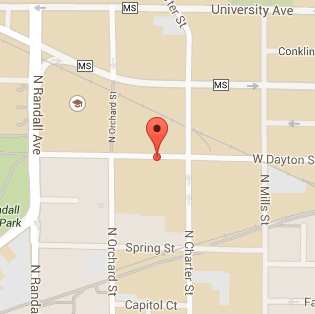The mineral separation laboratory occupies four adjacent rooms totaling about 800 square feet next to the mass spectrometer room. In this laboratory, rock and ash samples that have been disaggregated in the Rock Preparation Lab are processed to create pure separates of potassium rich minerals (sanidine, plagioclase, amphibole, micas) or of volcanic groundmass when attempting to date Pleistocene lava flows. The mineral or groundmass separates are created by exploiting the physical properties of rocks and minerals including density, magnetic susceptibility, hydrodynamic properties, color, crystal form. For some samples, mainly clear mineral concentrates from bentonites (altered volcanic ash beds) or other pyroclastic rocks, we use the Scanning Electron Microscope (SEM) in the Cameron Microprobe Laboratory to distinguish individual sanidine phenocrysts from plagioclase or quartz.
Minerals or groundmass that have been sorted into particular size ranges by sieving and cleaning may be isolated from other phases by exploiting their density contrasts and settling the particles in heavy liquid. We use Methylene iodide which has a specific gravity of 3.2 g/cm3 that can be reduced by mixing with acetone.
- Heavy liquid apparatus for separating phases on the basis of density contrast.
- Frantz barrier separator. Granular sample material is fed through the poles of a powerful electromagnet that physically separates phases from one another as grains with higher magnetic susceptibility are pulled along an elevated path through the magnetic field into a cup that sits above the cup collecting less magnetic grains.
Granular materials can be separated on the basis of contrasts in magnetic susceptibility. This is done using first a strong permanent magnet made of Samarium-Cobalt. If working with minerals, the less magnetic fraction (richer in feldspars and quartz) can then be introduced to the Frantz barrier separator (see photo). If working with volcanic groundmass that is rich in very fine grained iron-titanium oxide minerals, the Samarium-Cobalt magnet will attract the groundmass and leave behind the minerals (olivine, pyroxenes, amphibole, plagioclase) that we are trying to avoid in case these are actually wallrock xenocrysts.
When working with bentonites (altered volcanic ash beds) or other pyroclastic rocks is is sometimes advantageous to isolate small crystals of zircon or sanidine using a Gold table. The Gold table separates minerals from one another on the basis of contrasts in hydrodynamic properties as the minerals are funneled in a water stream and sorted by their velocities within the flow into a series of channels that are collected.
![[Photo: Clay disaggregator]](https://geochronology.geoscience.wisc.edu/wp-content/uploads/2014/12/Clay-disagregator-Salsabila-1024x683.jpg)
Ultrasonic clay disaggregator/double-vortice system for removing clays from heavier minerals including zircon and sanidine.
For clay-rich bentonite samples, an ultrasonic disaggregation/two-stage vortical separation system can remove the clays and concentrate crystals of zircon and sanidine. This system was constructed from the design published by Hoke, et al (2013) [PDF]. A high powered ultrasonic probe disaggregates clays in a bath that is magnetically stirred into a second bath that is also magnetically stirred. The stirring moves clays through the baths into the washout, while concentrating minerals in the containers.
![[Photo: Binocular picking microscopes]](https://geochronology.geoscience.wisc.edu/wp-content/uploads/2014/12/Picking-scope-Salsabila-300x200.jpg)
Binocular picking microscopes are in a room with an analytical balance and lead-shielded storage for radioactive samples.
Once a purified concentrate of the mineral of interest is available using the methods outlined above, individual crystals are inspected under binocular picking microscopes. At this stage any crystals or groundmass grains that exhibit alteration, or adhering glass or other phases, are excluded. It remains difficult to distinguish sanidine from quartz and plagioclase in many volcanic ash deposits. Thus for many samples, once a set of clear crystals – free of inclusions or alteration phases — are isolated, they are analyzed using the Scanning Electron Microscope in the Cameron Microprobe Laboratory.
![[UW-Madison Crest]](https://geochronology.geoscience.wisc.edu/wp-content/themes/uw-wiscar2015/library/images/uw-crest.png)
![[WiscAr Logo]](https://geochronology.geoscience.wisc.edu/wp-content/themes/uw-wiscar2015/library/images/wiscar-logo.png)

![[Photo: Heavy liquid apparatus]](https://geochronology.geoscience.wisc.edu/wp-content/uploads/2014/12/Heavy-Liquids-Allen-300x200.jpg)
![[Photo: Frantz barrier separator.]](https://geochronology.geoscience.wisc.edu/wp-content/uploads/2014/12/Frantz-Chase-Kresl-300x200.jpg)